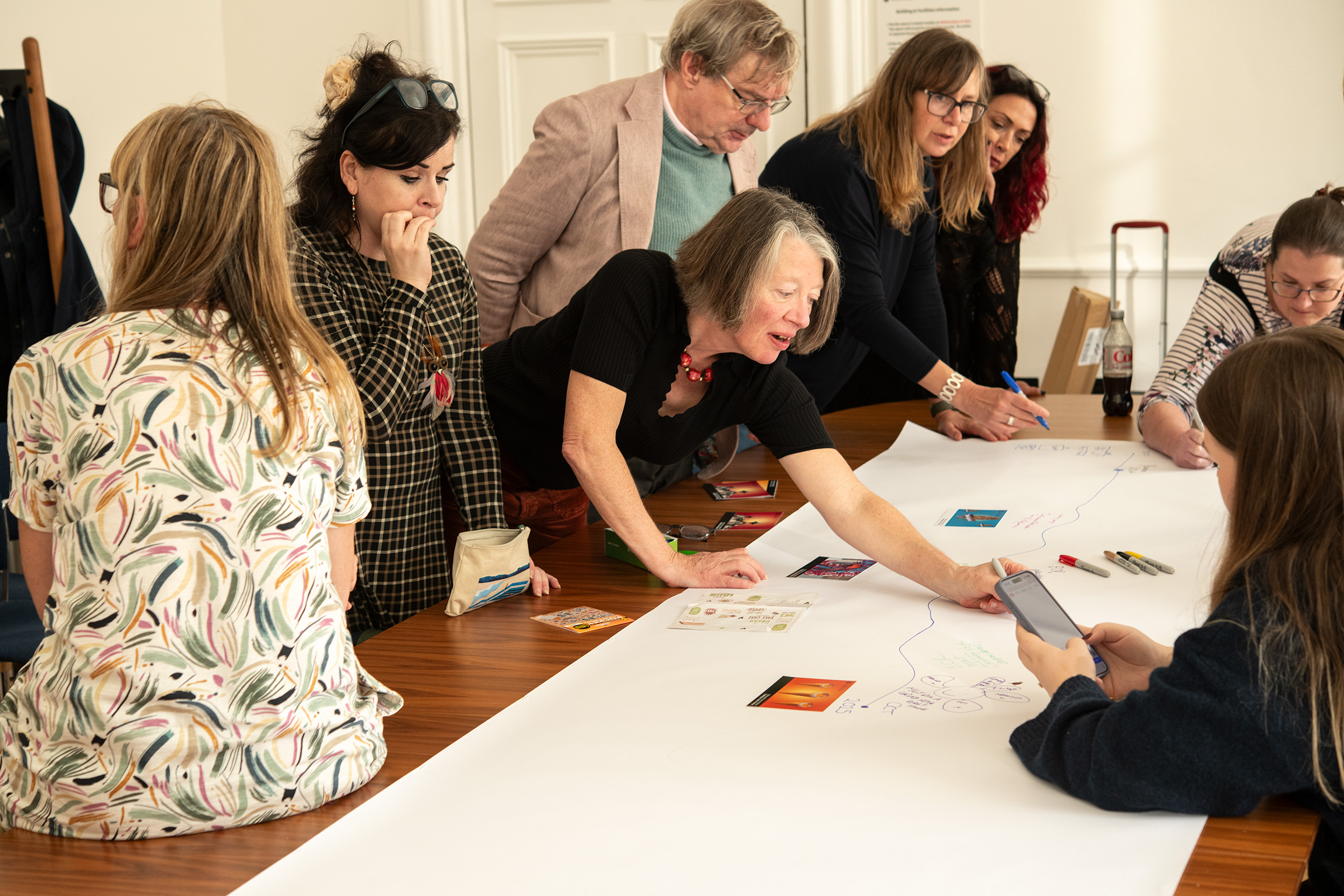This page is to help you get started with your C&I PPIE project application if you’d like to lead or co-lead a project. You’ll find example project ideas and a set of completed application documents. These resources show what a strong application looks like and give you inspiration for developing your own ideas.
General Notes
Leadership: Each project should be initiated, led and co-delivered by people with lived experience.
Cross-Hub Collaboration: Use existing PPIE or engagement coordinators in each Hub to facilitate connections and resource-sharing.
Budget-Friendly: Keep total costs within what’s reasonable for travel, workshops, and staff time (no equipment or institutional overheads).
Outputs: Toolkits, best practice guidelines, training resources, impact frameworks, creative outputs, or short reports are ideal.
Project Examples
All examples are based on the three main themes for 2026:
- Improving PPIE best practice
- Evaluating PPIE impact
- Enhancing understanding of people with SMI
You shouldn’t copy these ideas directly, but can use them as a starting point to shape your own project plan, adapt them to fit your interests, or combine ideas across Hubs.
Our goal is to make the application process as accessible and supportive as possible. Whether you’re new to research or have previous PPIE experience, these examples and templates are here to guide you step by step.
1. “Bridging Voices”: Inclusive PPIE training across Hubs
Theme: Improving PPIE Best Practice
Hubs connected: DATAMIND and ImmunoMIND
Idea: People with lived experience design and deliver a training toolkit for researchers on how to include people with SMI who face multiple barriers (e.g. psychosis, inpatient stays, digital exclusion) in research.
Activities:
- Run focus groups across hubs to co-create the training content.
- Pilot the training with one research team in each Hub.
- Develop guidance and a short video on lessons learned.
Outcomes: A co-created training package improving inclusion and accessibility in PPIE across hubs.

2. “PPIE in Crisis Contexts”: Best practice for involvement during acute illness
Theme: Improving PPIE Best Practice
Hubs connected: Complex Emotions and Social Health, collaborator McPin
Idea: People with lived experience of acute episodes (e.g. crisis admissions) develop and test principles for safe, ethical, and meaningful PPIE when people are unwell.
Activities:
- Workshops with PwLE, carers, and crisis team researchers
- Produce co-authored recommendations and crisis-sensitive involvement protocols.
Outcome: Best practice guidance for involvement during mental health crises, reducing exclusion of those with more severe illness.

3. “Real Voices, Real Change”: Measuring the impact of PPIE on research priorities
Theme: Evaluating PPIE Impact
Hubs connected: All six Hubs
Idea: PwLE evaluate how their contributions have shaped actual research outputs across the MHP so far.
Activities:
- PwLE-led audit of existing PPIE activities.
- Develop a “PPIE Impact Tracker” tool
- Run reflective sessions with researchers and PwLE to interpret findings.
Outcome: A replicable evaluation framework showing how PPIE has influenced research direction and inclusivity which can be applied to other projects within and outwith the MHP.

4.“Closing the Feedback Loop”: Understanding what happens after PPIE input
Theme: Evaluating PPIE Impact
Hubs connected: ImmunoMIND, Brain & Genomics
Idea: PwLE often share their experiences and insights in research projects, but don’t always hear what happens as a result. This project aims to evaluate how well researchers feed back to PPIE contributors and how that feedback (or lack of it) affects trust, motivation, and future involvement.
Activities:
- Hold focus groups with researchers and Hub coordinators to understand barriers to good feedback.
- Work together to co-create simple guidance and tools for researchers to close the feedback loop.
- Share findings and tools through a short online event open to all Hubs.
Outcome: Create practical tools to help Hubs improve communication, recognition, and mutual learning in their future involvement work.

5. “Digital Lives, Real People”: Online spaces and recovery
Theme: Enhancing Understanding of People with SMI
Hubs connected: DATAMIND and Social Health Hub
Idea: PwLE explore how people with SMI use digital platforms (e.g. gaming, online peer support) for connection and recovery, and how research can better reflect those experiences.
Activities:
- Lived experience researchers lead online ethnographic observation.
- Co-create digital storytelling outputs.
- Host an online showcase event across hubs.
Outcome: Deeper understanding of digital belonging for people with SMI, informing research ethics and inclusion in digital interventions.

6. “Research That Reflects Us”: Redefining meaningful outcomes for people with SMI
Theme: Enhancing Understanding of People with SMI
Hubs connected: Metabolic Psychiatry and Social Health
Idea: Many research studies on severe mental illness (SMI) measure success using outcomes like symptom reduction or hospital readmission rates. These may not reflect what matters most to people living with SMI. This project will bring together people with lived experience, carers, and researchers to co-develop a list of outcomes that feel meaningful, realistic, and person-centred.
Activities:
- PwLE lead workshops in both Hubs to identify what “progress” and “recovery” truly mean to them.
- Compare these lived experience priorities with outcomes commonly used in existing research.
- Co-develop a new “Meaningful Outcomes Framework” that researchers can use when designing or evaluating studies.
- Share findings through a short report, infographic, and researcher training session.
Outcome:
A lived experience–led framework that helps researchers design studies around outcomes that genuinely matter to people with SMI. This will improve the relevance, inclusivity, and real-world impact of future mental health research.

Example Documents
Here you can download an example set of documents to show you what a completed application could look like.
These are for Illustrative purposes only.
The content in these document is provided as a sample for guidance and illustration. It does not reflect actual data, research outcomes, or project details and should not be interpreted as accurate or definitive.
